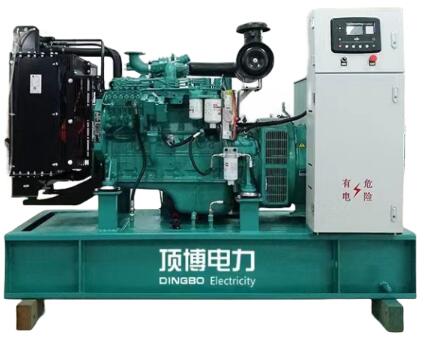Diesel generator sets are essential powerhouses, providing reliable electricity in various settings, from industrial facilities to remote locations. Understanding the inner workings of these robust machines sheds light on their importance and versatility. In this article, we will unravel the mechanics of how a diesel generator set works, exploring the key components and processes involved.
1. The Heart of the System: Diesel Engine
1.1 Combustion Process:
The diesel engine is the central component of a generator set, responsible for converting chemical energy stored in diesel fuel into mechanical energy. Combustion occurs within the engine cylinders, where fuel is sprayed into highly compressed air, leading to ignition and the release of energy.
1.2 Mechanical Energy to Rotational Motion:
The combustion process generates high-pressure gases, which drive the engine's pistons in a reciprocating motion. This mechanical energy is then converted into rotational motion through the engine's crankshaft.
2. Generator: Transforming Mechanical Energy to Electrical Energy
2.1 Coupling with Alternator:
The rotational motion from the diesel engine is coupled with an alternator, also known as a generator. The alternator consists of a rotor and stator, where the rotating magnetic field induces an electrical current in the stator windings, producing alternating current (AC).
2.2 Conversion to Direct Current (DC):
While many applications use AC directly, some require direct current (DC). In such cases, the AC produced by the alternator is converted to DC through the use of rectifiers, ensuring compatibility with various electrical devices.
3. Governing System: Regulating Speed and Output
3.1 Controlling Speed:
To maintain a steady and controlled output, diesel generator sets are equipped with a governing system. The speed of the engine is regulated to ensure it stays within the desired range, preventing overspeeding or underspeeding, which could impact the stability of the generated electricity.
3.2 Automatic Voltage Regulator (AVR):
The voltage output of the generator is crucial for the proper functioning of connected electrical devices. An Automatic Voltage Regulator (AVR) ensures that the generator maintains a stable voltage output, compensating for fluctuations in load and other variables.
4. Cooling System: Managing Heat Generated
4.1 Dissipating Heat:
The combustion process in the diesel engine generates a considerable amount of heat. A cooling system is integrated into the generator set to prevent overheating. This system typically involves the circulation of coolant, such as water or a water-glycol mixture, to dissipate excess heat.
4.2 Radiators and Heat Exchangers:
Radiators and heat exchangers play a crucial role in the cooling process. They facilitate the transfer of heat from the engine to the surrounding environment, ensuring that the generator operates within the optimal temperature range.
5. Fuel System: Supplying the Diesel Engine
5.1 Fuel Injection:
The fuel system of a diesel generator set involves the injection of diesel fuel into the engine cylinders. This process is precisely timed to synchronize with the combustion cycle, ensuring efficient and controlled fuel consumption.
5.2 Fuel Filtration:
Clean fuel is essential for the reliable operation of the diesel engine. Fuel filtration systems are incorporated to remove impurities and contaminants, preventing damage to the engine components and ensuring a consistent fuel supply.
Conclusion: Uninterrupted Power On-Demand
Understanding how a diesel generator set works reveals a symphony of mechanical and electrical processes working in harmony to produce reliable power. From the combustion of diesel fuel in the engine to the transformation of mechanical energy into electrical energy, each component plays a vital role in ensuring uninterrupted power on-demand.
For high-quality diesel generator sets or more information on their applications and advantages, contact us. As a trusted supplier, we offer a range of power solutions designed to meet the specific requirements of various industries. Empower your operations with a reliable supplier committed to quality and innovation.

Comments
Post a Comment